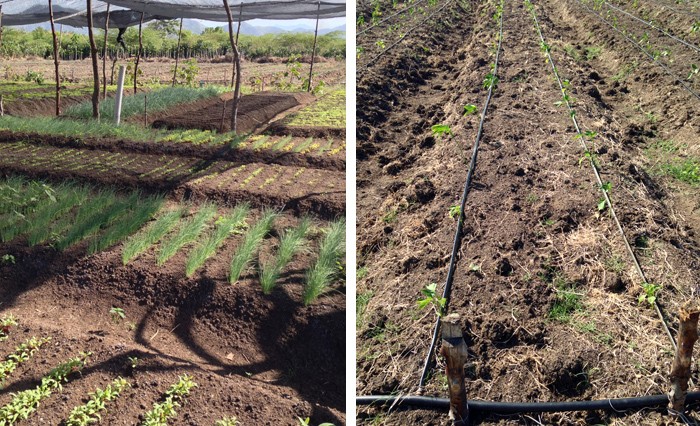
In the Northeast district of Haiti, near the village of Paulette, USAID’s AVANSE food production program is assessing a community-supported agricultural project for possible expansion or replication in the region.
USAID officials and DAI representatives who work with AVANSE, including the Agency’s Global Water Coordinator Christian Holmes, recently visited the project to learn more.
More than 30 years ago, this area was home to a major 18,000-hectare sisal plantation that employed 400 farmers. But the plantation shut down when the market for sisal, a fiber produced from a cactus-like plant, collapsed in the 1970’s due to the introduction of synthetic fibers. The farmers who had migrated from across Haiti to work here remained in the area, but could barely making a living.
About two years ago, the International Fund for Agricultural Development provided support to a group of former sisal farmers to lease 40 hectares. With this support, these farmers converted four hectares into a vegetable farm, using a drip irrigation system imported from Israel and purchased locally in Port-Au-Prince.
This gravity-fed drip irrigation system is supported by 18 three-hundred-gallon tanks, each of which rests on a concrete stand approximately six feet off the ground. The water comes from a 40-meter well on site, powered by a diesel generator. The farmers fenced the four acres with barbed wire and a cactus-like plant from the Euphorbia family, which produces a milky latex-like substance in its leaf and stems that goats and cattle hate.
At this stage, the farm only provides supplementary income. Last year it netted $5,000, producing such crops as shallots, beets, eggplant, and okra and selling them to customers, including two restaurants in Cap Haitien.
Overall, the farm is off to a good start. The principal obstacle is the lack of a truck to both move the produce to market and transport the well’s generator from the farm when not in use to protect it from the theft.







Comment
Make a general inquiry or suggest an improvement.